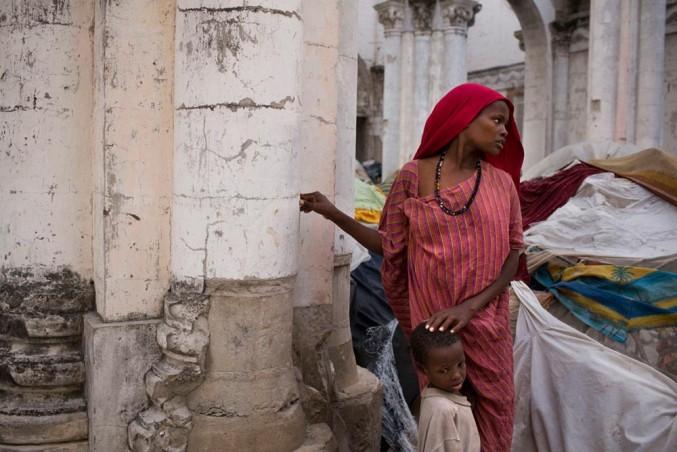By Nicole Schmidt
Dominic Nahr remembers each day he spent in Banadir Hospital as it filled with the withering bodies of malnourished children fighting for survival. Within hours, he saw new bodies – barely alive – take the places of those who had died.
“It was the darkest thing I’d ever seen,” says Nahr. “I watched a child go from being alive to taking its last breath.” In 2011, while working for TIME magazine, he was sent to Mogadishu, Somalia. Accompanied by TIME’s Africa bureau chief Alex Perry, Nahr’s job was to get photographic evidence of the famine that has killed about 150,000 Somalis.
He brought this collection, Captive State, to display at the Ryerson Image Centre (RIC) last month.
But this wasn’t the first or the last time he ventured into dangerous territory. In 2012, his shots depicting the massacre of citizens in war-divided Sudan made the shortlist for TIME’s top 10 photos and best photojournalism works of 2012.
Nahr didn’t always know he wanted to be a photographer. He originally enrolled in Ryerson’s film program and it wasn’t until after his first year, on a trip to Hong Kong, that he began experimenting with a camera.
He then got a three-month internship as a photojournalist with a local newspaper and that was the turning point. Once back in Toronto, Nahr transferred into photography.
After he graduated in 2008, he began picking up assignments with TIME, covering everything from the World Cup to malaria in Africa. He says it was his eclectic resume that landed him a contract in 2010.
Despite the diversity of his work, covering the famine in Somalia was one of his lifelong dreams. “People get forgotten there,” he notes.
He says he knew it was a dangerous place for a photojournalist – in part because of the high kidnapping rates – but he was still determined to document the realities of everyday life as a Somali.
“These people are in situations that we can’t even understand,” he says. “But there’s some sort of pride, and honour, and strength. I felt that from all the places I’ve been, Somalia has really suffered the most.”
Nahr recalls one particular moment of his journey that stands out in his memory: the connection he made with a woman wearing a loose, red veil, seeking shelter with her child.
“She was very beautiful and very strong,” he says. “I thought that from all the things I could photograph, I’d like to photograph her.”
The exhibit ends March 10.










Leave a Reply